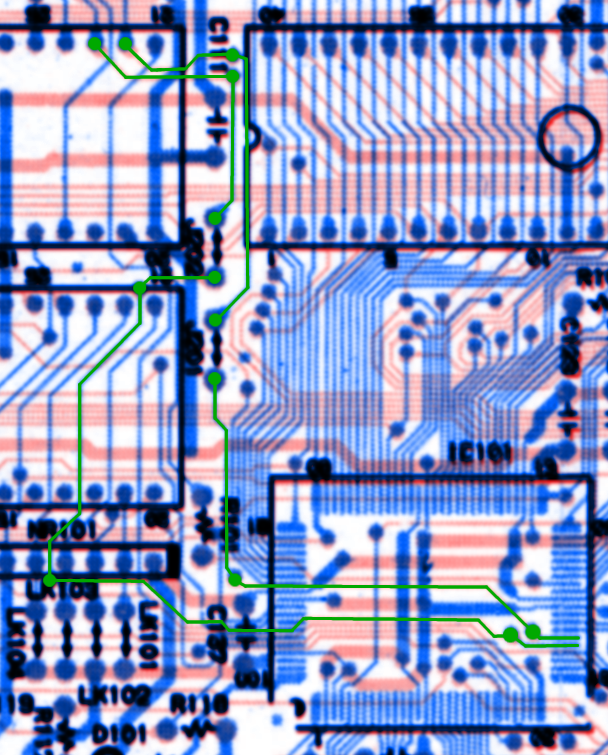Arnold4
The final cost down models came just before the release of the Amstrad plus. The same chip was used within late CPC464 and CPC6128. It performs the operations of the PAL used in the CPC6128, the Gate-Array used in older CPCs and the CRTC.
Contents
CRTC
In CRTC terms it operates almost the same as the CRTC within the Plus ASIC.
Costdown IC pinout information
The following information relating to the pins of the IC was tested and verified by Gerald:
L4N6 pin
While it is connected to GND on the 6128, it is left unconnected on the 464 and seems to be internally pulled up.
In 464 mode :
- the /ROM2 signal is always high : ROM7 selection is not handled on board.
- the /CAS1 signal is always high : RAM extension is not handled on board.
In 6128 mode :
- the /ROM2 signal is handled on board like AMSDOS ROM is handled on 6128/DDI1. When /EXT tied low, /ROM2 will be active when ROM7 is selected. When /EXT is floating (ie pulled up), /ROM2 will be active when ROM0 is selected.
- 464 will get stuck after displaying the copyright message and before the "BASIC 1.0" message as nothing is connected to /ROM2.
- the /CAS1 is handled on board. On 464, expect garbage instead of base RAM when using RAM selection other than C0 and no RAM extension connected.
Extension RAM management
In 464 mode :
- The RAMDIS signal IS taken into account. That mean that extension that does not force the MREQn will work. This include the SymbifaceII
- The C3 mode is NOT supported, as on regular 464.
In 6128 mode :
- On a 464, garbage all the way on extension RAM with no extension connected, as expected as no ram is there.
- adding 41464 in the alternate footprint and connected to CAS1 instead of CAS0 may transform the 464 in 4128
- With an extension, C3 is working as expected
ROM7 and ROMDIS in 6128 mode
- ROMDIS does not prevent internal ROM7 to be selected, as on regular 6128, unlike plus range.
- ROMDIS act as an output when ROM7 is selected (TBC : only on ROM7/0 ?)
- ROMDIS act as the DDI1 ROMDIS as it is active even during ram accesses.
The following picture shows the ROM detection routine : Selection of ROM7, followed by a read at 0xC000 where ROMDIS is active as well as /ROM2

/EXP
On a 464, when no DDI1 extension is plugged, /EXP is pulled high. /ROM2 signal is active as ROM0 and replace the BASIC. As no ROM is connected, it just crash !
On a 6128, /EXP is permanently tied to GND.
Bonus
- In the amendment service manual, pins 35 and 36 are undocumented. However, according to the PCB mask, these pins goes to the FDC through links : pin 35 to DATA, pin 36 to WINDOW
- Amstrad was designing its own data separator and planned to use it on this version of the CPC. But As hinted in Arnold_V_specs, it was not ready.
